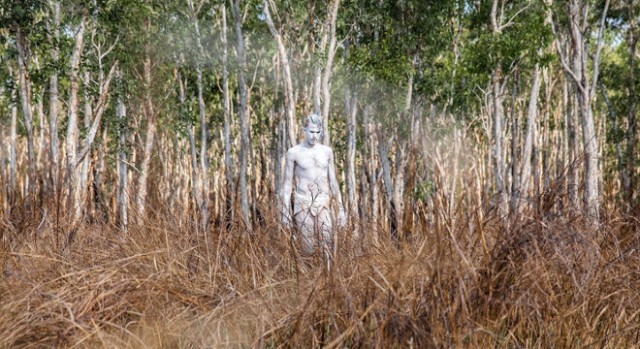Stephen Page’s Spear is the most extraordinary of dance musicals. Something completely and utterly new in Australian cinema. A work of such unique flavour that it’s hardly surprising to see it released on just a few screens nationwide. It’s true that this indigenous-themed journey across time and identity is not the sort of film that was ever likely to break out into wide audience recognition – to be sure, it’s closer in spirit to a mash-up of Warwick Thornton’s Samson & Delilah with Wim Wenders’ Pina if you can imagine it – but that its existence has come with but a mere whisper suggests something deeply frustrating.
Is it that the people who like to shout loudly, predominantly online, about (cue new buzzword) diversity on screen and a desire for an industry that truly represents this country’s great cultural mix, simple don’t care enough to actually go and see a film such as Spear? Or it that the film’s shortcomings such as repetitiveness and a foggy, vague narrative thrust, make it harder for the film to resonate when it is already a tricky sell at best? Well, I guess, people have to see it before they’d know that. Spear won’t be for everybody, but it deserves a better shake of things than it will get. That many audiences will no doubt scratch their heads in perplexed bewilderment throughout is actually somewhat refreshing – it means it is challenging and curious and the sort of movie lovers of art cinema ought to be running towards.
Directed by Page, artistic director of the Bangarra Dance Company (he also filmed one of The Turning’s 18 shorts), and co-written by Page and Justin Monjo, Spear is about the struggle of one young man to reconcile what society expects from him in the modern world with that of his ancestors’ traditions and his people’s heritage. Hunter Page-Lochard stars as Djani, a young man on the verge of adulthood who journeys through a dream-like trance, trailed by the instilled memory of his ancestors’ past lives, confronting the versions of the Aboriginal male – the drunk, the thug, the drag queen – that society expects him to become.
While I am sure indigenous audiences will get more of a contextual gratification out of the particulars of Spear – the smearing of white paint across the forehead and through the hair is a recurring motif that holds a symbolic significance – for everybody, the film is a celebration. A celebration of Aboriginal music and song as well as of their bodies and physiques as they are presented here in a way that is rarely afforded to them. As lithe, sexual beings with deeply complex thoughts and feelings. It confronts what audiences expect from both indigenous cinema and Aboriginal people by offering them the chance to tell their own story in their own way. A rare gift indeed.
I would have appreciated if Page and his cinematographer Bonnie Elliott had have utilised more wide shots more. The dancing is incredible when we are able to see it, but while focusing on the occasional extended arm or stretching torso allows for the audience to marvel at the sheer physicality of the dancing, the use of medium shots mean legs, arms, and even entire bodies are cropped out of the frame. However, while some may find the staging of the dance numbers to be too stage-oriented, I found myself choosing to believe they chose this device intentionally for the way it suggests many indigenous people do not consider the vast horizon-reaching exteriors of the land to be their own anymore and that they must forge their own space to be, create, and exist. With the addition of evocative music, sound design, and the attention-grabbing face of its lead, Spear proves to be one of the most interesting works of Australian film in a long time.

